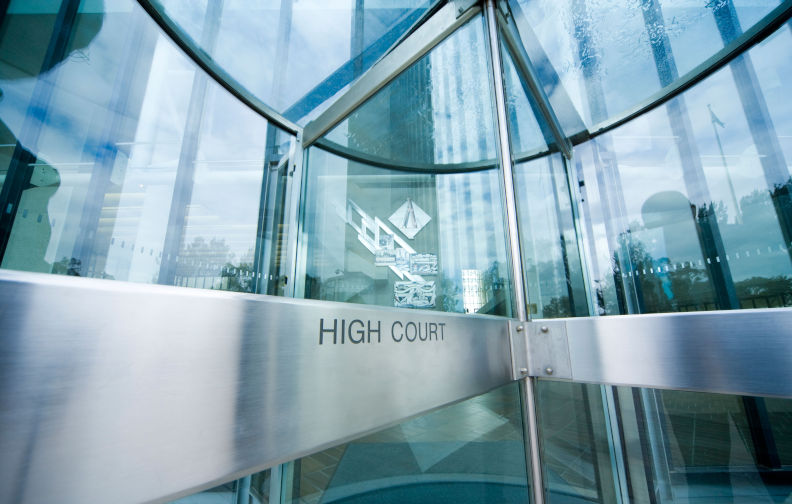The High Court’s judgment in March 2025 in favour of the Gumatj people has reaffirmed the centrality of the Indigenous peoples of Gove in the Northern Territory in the native title revolution that was conceived in a case against mining company, Nabalco Ltd, in the 1960s and continued with the High Court’s Mabo and Wik judgements in the 1990s.
In 1931, an area in Arnhem Land of 96,000 square kilometres stretching from the East Alligator River in the Northern Territory to the Gulf of Carpentaria was declared to be the Arnhem Land Aboriginal Reserve. The declaration was made by the Commonwealth, which had taken over responsibility for the Northern Territory from South Australia in 1911.
In the 1950s, large deposits of bauxite, the raw material used for the creation of aluminium metal, were discovered in Gove, including in the Aboriginal Reserve. Following the discovery, the Menzies Government decided to lease bauxite-rich territory in Gove in the Northern Territory to mining companies. In doing so, the government excised part of the Aboriginal Reserve to include in the bauxite mining lease.
The announcement of the decision in 1963 sparked a major protest. Edgar Wells, the superintendent of the Yirrkala Methodist Mission in Gove, protested to Menzies at the effects of bauxite mining on the Indigenous inhabitants of the Northern Territory. Wells’ telegram paved the way for a national campaign for “land rights” for Aborigines. The telegram was picked up by the federal Council for Aboriginal Rights, which issued a statement that “Aborigines have an inalienable right to security of land tenure of tribal lands which may not be superseded by any mineral rights… The ownership of the territories concerned in Arnhem Land, including rights to all minerals on or under the land, [should] be vested in the Aborigines themselves”.
Historian Bain Attwood has argued that Yirrkala transformed the federal council’s ideas because northeast Arnhem land was inextricably connected with “tribal Aborigines” and “Aboriginal tradition”, symbols that authenticated Aboriginal land rights. Northeast Arnhem Land had, moreover, been less affected by white colonisation than other areas such as Queensland where pastoralism and mining had displaced Aboriginal peoples. Consequently, it was easier for the Indigenous inhabitants of Gove to assert that they were the actual owners of their land than the peoples evicted by mining company, Comalco Ltd, from their lands in north Queensland in the 1950s.
Accordingly, the Indigenous peoples of Gove and their supporters started preparing a legal case against the bauxite mining companies. By the mid-1960s, the international mining company Alusuisse had joined forces with several Australian mining companies headed by Colonial Sugar Refining to form a Swiss-Australian company, North Australian Bauxite and Alumina Company Ltd (Nabalco). In 1968, Nabalco was granted the lease to mine the bauxite at Gove and build an alumina refinery and a new major township at Nhulunbuy.
In that year, the Yolngu people, who five years earlier had presented the famous bark petition to the House of Representatives, submitted a case against Nabalco’s mining lease to the Northern Territory Supreme Court. Milirrpum v Nablaco Pty Ltd, which was decided in 1971, was the first time that a native title argument was argued in Australian courts. The barrister who represented the Indigenous people was Albert Edward Woodward QC, who would later chair a royal commission into appropriate ways to recognise Aboriginal land rights in the Northern Territory. Woodward advanced a novel legal argument that the Nabalco case should be determined from “the grassroots of the common law, where questions of principle, morality and policy are important” (National Archives of Australia: A432, 1968/649 part 7). Opposing Woodward were lawyers representing Nabalco and the Commonwealth, arguing along traditional legal principles that the land was open for settlement or mining despite the presence of Indigenous peoples.
Woodward’s common law argument did not persuade Justice Richard Blackburn, who ruled in favour of Nabalco and the Commonwealth. The distinguished anthropologist, W.E.H Stanner, was observing the legal proceedings. In his view, the Commonwealth’s argument rested on the fact of occupation and a self-serving reading of Australian history. Although on the losing side in this case, he predicted that Woodward’s argument would go on have a “heavy resonance in our future public life” (National Archives of Australia: A432, 1968/649 part 7).
Stanner’s observation was prescient. Two decades later, in 1992, the High Court recognised the existence of native title to land in Australia. This was the first time that a court had recognised pre-colonial land interests of Indigenous Australians within the common law of Australia. The Mabo judgement of 1992 was followed by the Commonwealth Parliament’s passing of the Native Title Act in 1993 and the High Court’s 1996 Wik judgment that native title could co-exist with pastoral leases. After the 1990s native title revolution, it was commonly thought that Indigenous groups could recover compensation for native title back to 1975 when the Racial Discrimination Act was passed during the time of the Whitlam Government.
The High Court judgment in 2025, in favour of the Gumatj, has advanced the native title revolution that was conceived in the Northern Territory in the 1960s. The case decided by the High Court began in 2019 when Dr Galarrwuy Yunupingu filed a case on behalf of the Northern Territory’s Gumatj clan, part of the Yolngu people, to prove that it was owed compensation from the Crown for the mining of bauxite in the 1960s without the consent of the clan. In May 2023, the Federal Court found that the Gumatj land was not acquired “on just terms” before being leased to Nabalco in 1968.
In its decision in March 2025, the High Court upheld the Federal Court’s decision, affirming the line of argument first advanced by Woodward in the Northern Territory in 1968. The High Court’s judgment reads that: “Native title recognises that, according to their laws and customs, Indigenous Australians have a connection with country. It is a connection which existed and persisted before and beyond settlement, before and beyond the assertion of sovereignty and before and beyond federation. It is older and deeper than the constitution.”
The High Court’s latest decision also pushed back the date from which Indigenous people can claim compensation for their loss of property rights in the Northern Territory from 1975 to 1911, the year in which the Commonwealth took over responsibility for the territory from South Australia. This is because, under Section 51 of the Commonwealth Constitution, the Commonwealth must compensate an owner fairly, that is, on “just terms”, if they acquire property. This Constitutional provision applies to the Commonwealth, but not to the States.

David Lee
David Lee is Associate Professor in the University of New South Wales, Canberra, National Archives of Australia Cabinet Historian, author of The Second Rush: Mining and the Transformation of Australia and co-editor of a book of official documents on Australia and the People’s Republic of China, 1949-1972.
